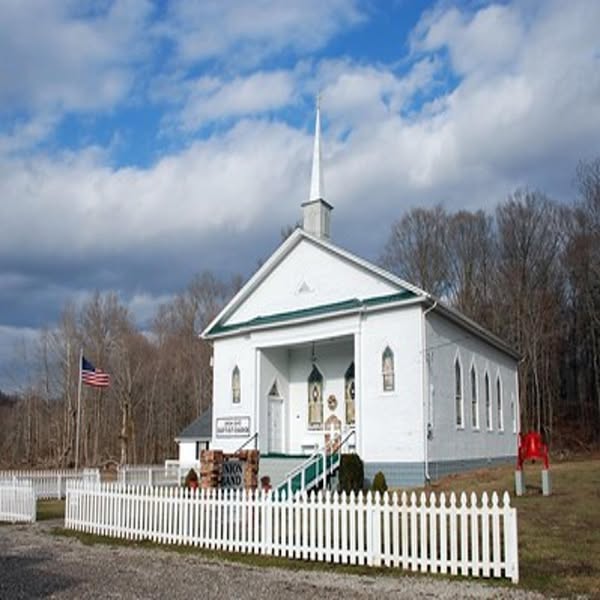

Union Band Baptist Church: Two Centuries of Faith on the Rolling Fork
Drive along Highway 84 near Howardstown, Kentucky, and you’ll come upon a quiet country church standing watch over a cemetery that holds the stories of generations. The sign out front reads Union Band Baptist Church, but the history behind that name stretches back two full centuries—200 years of worship, work, and witness in this small Nelson County community.
Seeds of a Growing Faith
The roots of Union Band go back to 1825, when Kentucky was still the edge of the western frontier. The Catholic migration into the region is often told, but the Baptist story here is equally rich—neighbors gathering where the fields meet the woods, lifting their voices in praise, and carving out a spiritual home on the rugged land near the Rolling Fork River.
The first church was a simple log structure, tucked near where the cemetery now lies. Built by the hands of the congregation themselves—farmers, craftsmen, and homemakers—it stood until 1839, when the growing membership needed more space.
A Temple on the Woods
In 1839, they raised a new hewn-log building nearby. Those timber walls bore witness to baptisms, revivals, weddings, and funerals for decades. By 1872, they had built a third structure, this time of brick and wood—measuring 50 feet long, 38 feet wide, and 14 feet high from floor to ceiling—a sign of endurance and permanence.
That building served the church family for nearly a century, through the hardships of the Civil War, through floods and droughts, through the Depression and two World Wars. Week after week, the congregation gathered—not just in good times, but in the hard ones too.
In 1965, the present-day structure was built—a modern building with a baptistery, education department, and dining hall, designed to meet the daily life of the church as well as Sunday worship.
But to really understand Union Band Baptist Church, you need to see where it sits. One of the photos shared here was taken from across the Rolling Fork River, at the old site of the Otter Creek One-Room School, about two miles away. The view from there gives you a sense of the church’s remote and rural setting—tucked quietly into the landscape, nearly hidden by hills and trees.
No subdivisions here. No highways buzzing nearby. Just winding creeks, fence rows, and the blue-green of the Kentucky knobs in the background.
Beside the church stands Stiles Cemetery, where early settlers and entire family lines rest. Weathered headstones tell their own stories. Many of the names here repeat in church records, in family trees, and still today in the pews.
Among the most prominent family names associated with Union Band Baptist Church and its cemetery are:
Stiles, Beeler, Gaddie, Willett, Miller, DeSpain, Price, and Perkins—names that appear again and again, woven into the fabric of this church’s long history.
Come Gather Round
Two hundred years is no small thing. This is not the story of a megachurch with polished marble floors. This is the story of a small country congregation that showed up, year after year, through every season of life.
Folks who sang from hymnals worn thin at the edges. Who gathered in winter’s cold and summer’s heat. Who prayed through wars and plagues, who buried their dead in the ground outside the church doors, and planted their hopes in the generations that would follow.
Union Band is still a gathering place. The roll call of the saints continues to grow—but so does the witness of those who remain, keeping the doors open and the gospel message strong in these Kentucky hills.
